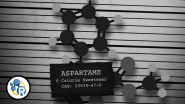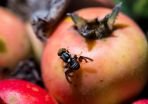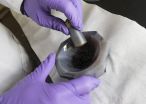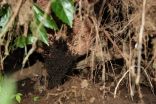(Press-News.org) An international research team has found a way of protecting sensitive catalysts from oxygen-caused damage. In the future, this could facilitate the creation of hydrogen fuel cells with molecular catalysts or with biomolecules such as the hydrogenase enzyme. To date, this could only be accomplished using the rare and expensive precious metal platinum. Together with their French colleagues, researchers from Bochum and Mülheim describe the way in which a hydrogel can serve as a "protective shield" for biomolecules by two articles written in the journals Angewandte Chemie and the Journal of the American Chemical Society.
Requirements on catalysts are difficult to reconcile
In order to be suitable for industrial applications, catalysts have to be efficient, stable and affordable; in addition, they have to be tailor-cut for one specific chemical reaction. "Uniting all of these requirements in one molecule is a considerable challenge," says Dr Nicolas Plumeré from the Chemistry Department at the Ruhr-Universität Bochum. However, a novel hydrogel in which catalysts are embedded could greatly simplify the development of fuel cell catalysts in the future. To explore this possibility, the researchers from Bochum began a collaborative project with colleagues from the Max Planck Institute for Chemical Energy Conversion in Mülheim and from Aix Marseille University and the Centre National de la Recherche Scientifique (CNRS) in France.
Hydrogel acting as solvent and as protective environment
For their experiments, the German team utilised the hydrogenase enzyme from the green alga Chlamydomonas rheinhardtii; it splits hydrogen into protons and electrons. Typically, even trace amounts of oxygen cause irreversible damage to this biomolecule. However, the researchers incorporated it in a hydrogel which assumes two functions: it acts as a solvent, ensuring that all reaction partners reach the enzyme quickly and easily. At the same time, it provides a protective environment in which the oxygen cannot penetrate through to the enzyme, even if it is present at relatively high concentrations. The trick: the hydrogenase activity leads to the creation of electrons; they wander through the hydrogel and are transmitted to the oxygen, thus converting it into a harmless form, namely water.
Catalyst design could become considerably easier in the future
Using simulations and experiments, the German-French team demonstrated another important property of hydrogels. The activity of many catalysts decreases over time due to exposure to deactivating molecules. Some can be rendered functional again through special reactivation processes. Notably, however, the hydrogel protects even those catalysts for which a reactivation process does not exist. "In future, we will thus no longer have to pay attention to the robustness or suitable reactivation processes when developing catalysts for technical applications," explains Olaf Rüdiger, Chemist at the Max Planck Institute for Chemical Energy Conversion. "We can focus solely on maximising the catalyst's activity. This will simplify the development process to a considerable degree and open up new possibilities for the manufacture of fuel cells."
INFORMATION:
Funding
The German Research Foundation funded the project as part of the RESOLV Cluster of Excellence (EXC 1069). The French subproject has been carried out thanks to the support of the A*MIDEX project "MicrobioE" (n° ANR-11-IDEX-0001-02) funded by the "Investissements d'Avenir" French Government programme.
Bibliographic record
A. Alsheikh Oughli, F. Conzuelo, M. Winkler, T. Happe, W. Lubitz, W. Schuhmann, O. Rüdiger, N. Plumeré (2015): Protection from oxidative damage of the O2 sensitive [FeFe]-hydrogenase from Chlamydomonas reinhardtii using a redox hydrogel, Angewandte Chemie International Edition, DOI: 10.1002/anie.201502776R1
V. Fourmond, S. Stapf, H. Li, D. Buesen, J. Birrell, R. Olaf; W. Lubitz, W. Schuhmann, N. Plumeré, C. Léger (2015): The mechanism of protection of catalysts supported in redox hydrogel films, Journal of the American Chemical Society, DOI: 10.1021/jacs.5b01194
Further information
Dr Nicolas Plumeré, junior research team Molecular Nanostructures at the Centre for Electrochemical Sciences (CES), Faculty of Chemistry and Biochemistry at the Ruhr-Universität, 44780 Bochum, Germany, phone: +49/234/32-29434, email: nicolas.plumere@rub.de
Dr Olaf Rüdiger, head of research group Protein-Electrochemistry, Max Planck Institute for Chemical Energy Conversion, Mülheim an der Ruhr, Germany, phone: +49/208/306 3526, email: olaf.ruediger@cec.mpg.de
Figure online
A figure related to this press release can be found online at:
http://aktuell.ruhr-uni-bochum.de/pm2015/pm00078.html.en
The stress and worry of giving birth prematurely does not adversely affect a mother's parenting behaviour, according to researchers at the University of Warwick.
Preterm children often require special care in the neonatal period including incubator care or assistance with breathing. Previous research has suggested that this stress, separation and an increased tendency for depression may impair a mother's parenting behaviour and adversely affect preterm childrens' long term development.
However, a new paper from the University of Warwick shows that mothers of preterm ...
WASHINGTON, June 15, 2015 -- It's been around for decades and it's probably in your diet soda - for a little while longer anyway. PepsiCo announced recently it was removing the artificial sweetener aspartame from its Diet Pepsi products in the U.S. starting in August. The company cited consumer concerns about the chemical's safety. So this week, Reactions answers the question, "Is aspartame safe?" Check it out here: https://youtu.be/92r1oOul0kM.
INFORMATION:Subscribe to the series at http://bit.ly/ACSReactions, and follow us on Twitter @ACSreactions to be the first to ...
HOUSTON -- (June 15, 2015) -- A team of biologists from Rice University, the University of Notre Dame and three other schools has discovered that an agricultural pest that began plaguing U.S. apple growers in the 1850s likely did so after undergoing extensive and genome-wide changes in a single generation.
This new result, which appears online this week in Ecology Letters, came from applying the latest tools of genome sequencing and analysis to preserved evidence from experiments carried out at Notre Dame in the 1990s. The research focuses on the fruit fly Rhagoletis ...
DENVER, June 15 -- A new study from the University of Colorado Denver finds that scientists agree that children of same-sex parents experience 'no difference' on a range of social and behavioral outcomes compared to children of heterosexual or single parents.
The study was led by Jimi Adams, an associate professor in the Department of Health and Behavioral Studies at CU Denver College of Liberal Arts and Sciences, and published this month in Social Science Research.
The research comes at a time when the U.S. Supreme Court is determining whether the Constitution requires ...
Bethesda, MD (June 15, 2015) -- Modifying the small white blood cells that protect against disease might help treat immune disorders, according to a study1 published in Cellular and Molecular Gastroenterology and Hepatology, the basic science journal of the American Gastroenterological Association. Specifically, researchers found that modulation of B lymphocyte function may be a means of regulating T lymphocyte function to treat immune-mediated disorders, including inflammatory bowel diseases (IBD).
Researchers uncovered the following pathway: gut bacteria stimulate intestinal ...
This news release is available in German. An innovative mechanism that the innate immune system uses to control viral infections has been uncovered by researchers at the University Medical Centers in Mainz and Freiburg. Central to this is the discovery that two different but related elements of the immune system can act together in concert to fight, for example, rotavirus infections. Infection with rotavirus is the most common cause of diarrhea in children around the world. The results of the research have recently been published in the eminent scientific journal Nature ...
GAINESVILLE, Fla. -- Aging can cause many changes to the body, including obesity and a loss of lean mass. Now, a group of University of Florida Health researchers has discovered that an existing drug reduces body fat and appetite in older rats, which has intriguing implications for aging humans.
Rapamycin, a pharmaceutical used to coat coronary stents and prevent transplant rejection, reduces obesity and preserves lean body mass when given intermittently to older rats. The two rapamycin-related studies were published recently in the Journal of Gerontology as a joint effort ...
A simple way to turn carbon nanotubes into valuable graphene nanoribbons may be to grind them, according to research led by Rice University.
The trick, said Rice materials scientist Pulickel Ajayan, is to mix two types of chemically modified nanotubes. When they come into contact during grinding, they react and unzip, a process that until now has depended largely on reactions in harsh chemical solutions.
The research by Ajayan and his international collaborators appears in Nature Communications.
To be clear, Ajayan said, the new process is still a chemical reaction ...
The city where an individual lives can influence the risk of dying by suicide, according to a new study from sociologists at Rice University and the University of Colorado at Boulder.
"Suicide in the City: Do Characteristics of Place Really Influence Risk?" appears in the latest edition of Social Science Quarterly. The study found that adults living in cities with more socio-economic disadvantages and fewer families living together have higher odds of suicidal death than adults living in less-disadvantaged cities and cities with more families living together.
The findings ...
PHILADELPHIA (June 15, 2015) - Army ants, the nomadic swarming predators underfoot in the jungle, can take down a colony of prey animals without breaking a sweat. But certain army ant species can't take the heat.
According to a new study from Drexel University, underground species of army ants are much less tolerant of high temperatures than their aboveground relatives--and that difference in thermal tolerance could mean that many climate change models lack a key element of how animal physiology could affect responses to changing environments.
At face value, this is ...



